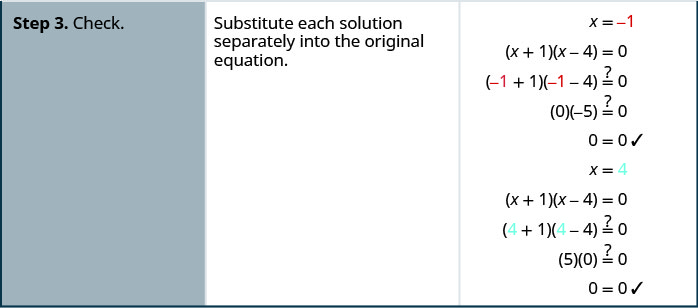

Before you get started, take this readiness quiz.
We have already solved linear equations, equations of the form \(a x+b y=c\). In linear equations, the variables have no exponents. Quadratic equations are equations in which the variable is squared. Listed below are some examples of quadratic equations:
\[x^+5 x+6=0 \quad 3 y^+4 y=10 \quad 64 u^-81=0 \quad n(n+1)=42\]
The last equation doesn’t appear to have the variable squared, but when we simplify the expression on the left we will get \(n^+n\).
The general form of a quadratic equation is \(a x^+b x+c=0\),with \(a \neq 0\).
An equation of the form \(a x^+b x+c=0\) is called a quadratic equation.
To solve quadratic equations we need methods different than the ones we used in solving linear equations. We will look at one method here and then several others in a later chapter.
We will first solve some quadratic equations by using the Zero Product Property. The Zero Product Property says that if the product of two quantities is zero, it must be that at least one of the quantities is zero. The only way to get a product equal to zero is to multiply by zero itself.
We will now use the Zero Product Property, to solve a quadratic equation.
Solution



Answer